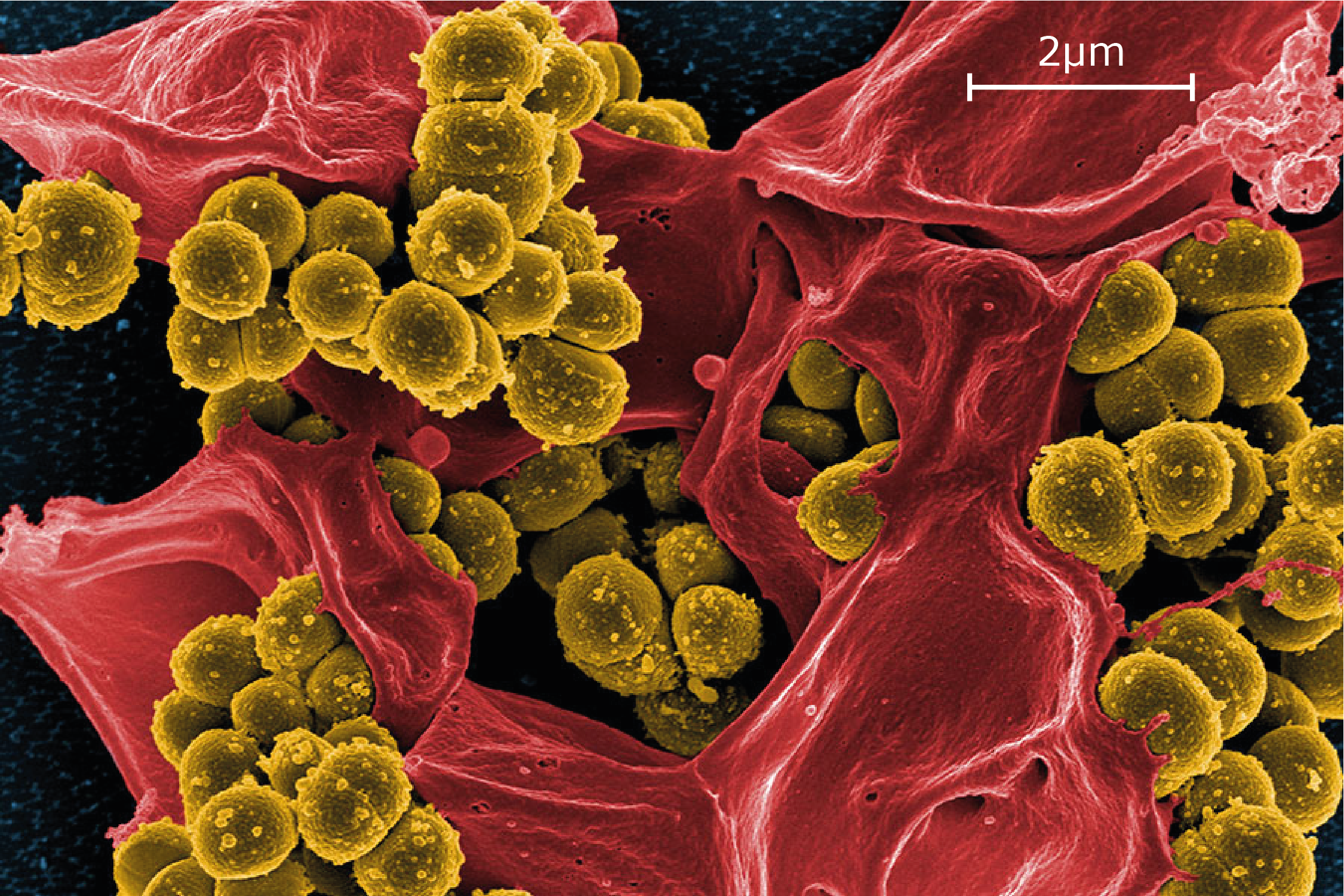This topic takes on average 55 minutes to read.
There are a number of interactive features in this resource:
 Biology
Biology
 Chemistry
Chemistry
 PSHE / Citizenship studies
PSHE / Citizenship studies
 Science
Science
Infectious diseases cause millions of deaths globally every year. Microorganisms that cause infectious diseases include bacteria, fungi, viruses and protozoa.
These microorganisms all differ in size and structure. One key difference between bacteria and fungi is that bacteria are prokaryotic and fungi are eukaryotic. For more information on this have a look at pathogens and the immune system.
Bacteria can cause a range of infections including tonsillitis (usually caused by Streptococcus pyogenes) and tuberculosis (caused by Mycobacterium tuberculosis).
Fungal infections range from less serious athlete's foot (caused by Trichophyton rubrum) to life threatening invasive candidiasis (a bloodstream infection caused by Candida). Usually only immunocompromised patients develop life threatening fungal infections.
Antimicrobial medicines treat a range of infections- they are vital in today’s society. Antimicrobial resistance is a global problem. It is estimated that bacterial AMR was directly responsible for 1.27 million global deaths in 2019 and contributed to 4.95 million deaths1. If nothing changes, by 2050 antimicrobial resistance will result in 10 million deaths per year. Antimicrobial resistance is a huge threat to global health - we must take action!

Methicillin resistant Staphylococcus aureus (MRSA). This bacterium is resistant to methicillin, and therefore, other antibiotics must be used against it. Image was obtained with scanning electron microscopy
This resource will help you to understand:
Antimicrobial Resistance Collaborators. (2022). Global burden of bacterial antimicrobial resistance in 2019: a systematic analysis. The Lancet; 399(10325): P629-655. DOI: https://doi.org/10.1016/S0140-6736(21)02724-0